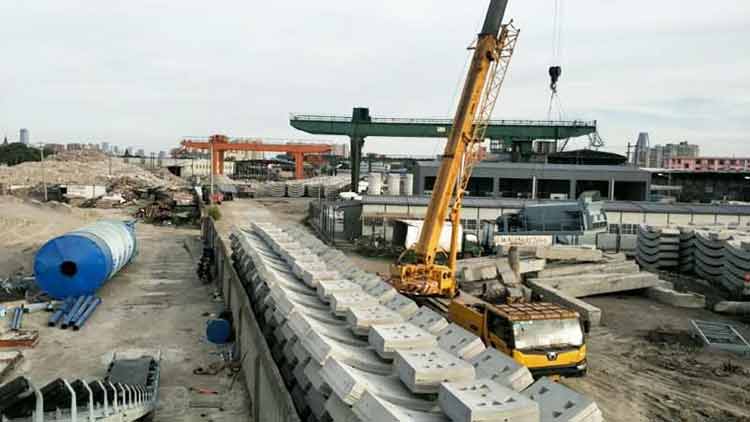The reason of high performance concrete cracking is discussed
Concrete shrinkage is the main cause of concrete cracking.
Dry shrinkage.dry shrinkage is to point to concrete to stop after curing, lose the adsorption water of internal wool stoma and gel aperture in unsaturated air and the irreversible shrinkage that produces, it is different from the reversible shrinkage that dry and wet cause alternately.This phenomenon is particularly obvious in concrete after the first removal of the mold, when the concrete strength is very low, dry shrinkage is very large, at the same time, due to the concrete after removal of the mold and air contact with the surrounding air temperature rise, resulting in the surrounding air moisture reduction, further increasing the concrete dry shrinkage.The main factors affecting the drying shrinkage of concrete are: aggregate, water-cement ratio and cement content per unit.
Chemical shrinkage.After cement hydration, the volume of solid phase increases, but the absolute volume of cement system decreases.All cementitious materials have this reduction effect after hydration, most Portland cement after hydration volume reduction of 7% ~ 9%.Before hardening, the increased solid volume fills the space previously occupied by water, making the cement compact and the macroscopic volume shrink.After hardening, the macroscopic volume remains unchanged while the cement-water volume shrinks to form internal pores.Therefore, this chemical reduction does not affect the properties of hardened concrete until it is hardened.Chemical shrinkage is related to the composition of the cement.
Plastic shrinkage.Plastic shrinkage occurs in the plastic stage before hardening, refers to the plastic stage of concrete due to the surface water loss rate is greater than the rate of bleeding water shrinkage, more common in roads, floors, floor and other large areas of engineering, to the wind in summer under the most common construction.Concrete in the state of fresh mixing, mixing particles filled with water, if the curing is insufficient, the surface water loss rate exceeds the internal water migration rate to the surface, will cause a negative pressure in the capillary, so that the slurry plastic contraction.Plastic shrinkage is often accompanied by the development of invisible cracks.
Temperature contraction.Temperature shrinkage is mainly caused by the increase of the internal temperature of concrete due to the hydration of cement and the final cooling to the ambient temperature.Its size is related to environment temperature, concrete pouring temperature, thermal expansion coefficient of concrete, maximum temperature of concrete and cooling rate.Reducing temperature rise, decreasing cooling rate, improving tensile strength of concrete and using low thermal expansion coefficient aggregate (limestone, gabbro) are beneficial to reduce cold shrinkage and prevent cracking.
Carbonization shrinkage.CO2 in the air is about 0.04%. Under appropriate conditions of relative humidity, CO2 can react with the hydrates generated by cement hydration on the concrete surface very quickly, which is called carbonization. With volume shrinkage, it is called carbonization shrinkage.Carbonization shrinkage is irreversible.
Autogenous shrinkage.Since the shrinkage is because the concrete interior relative humidity decreases along with the cement hydration progress, then causes the wool pore in the moisture not to be saturated, and thus produces the negative pressure causes the concrete contraction.Concrete self - shrinkage occurs when concrete and the outside world do not exchange moisture.The main influencing factors of autogenous shrinkage include water-cement ratio, cement variety, auxiliary cementing material, aggregate, cement fineness, curing temperature, admixture and sample size.

Zhengzhou Xinfeng Machinery Co., Ltd. Main concrete mixer,
concrete mixing station, stabilized soil mixing station, concrete batching machine, concrete conveying equipment, please call to discuss!


